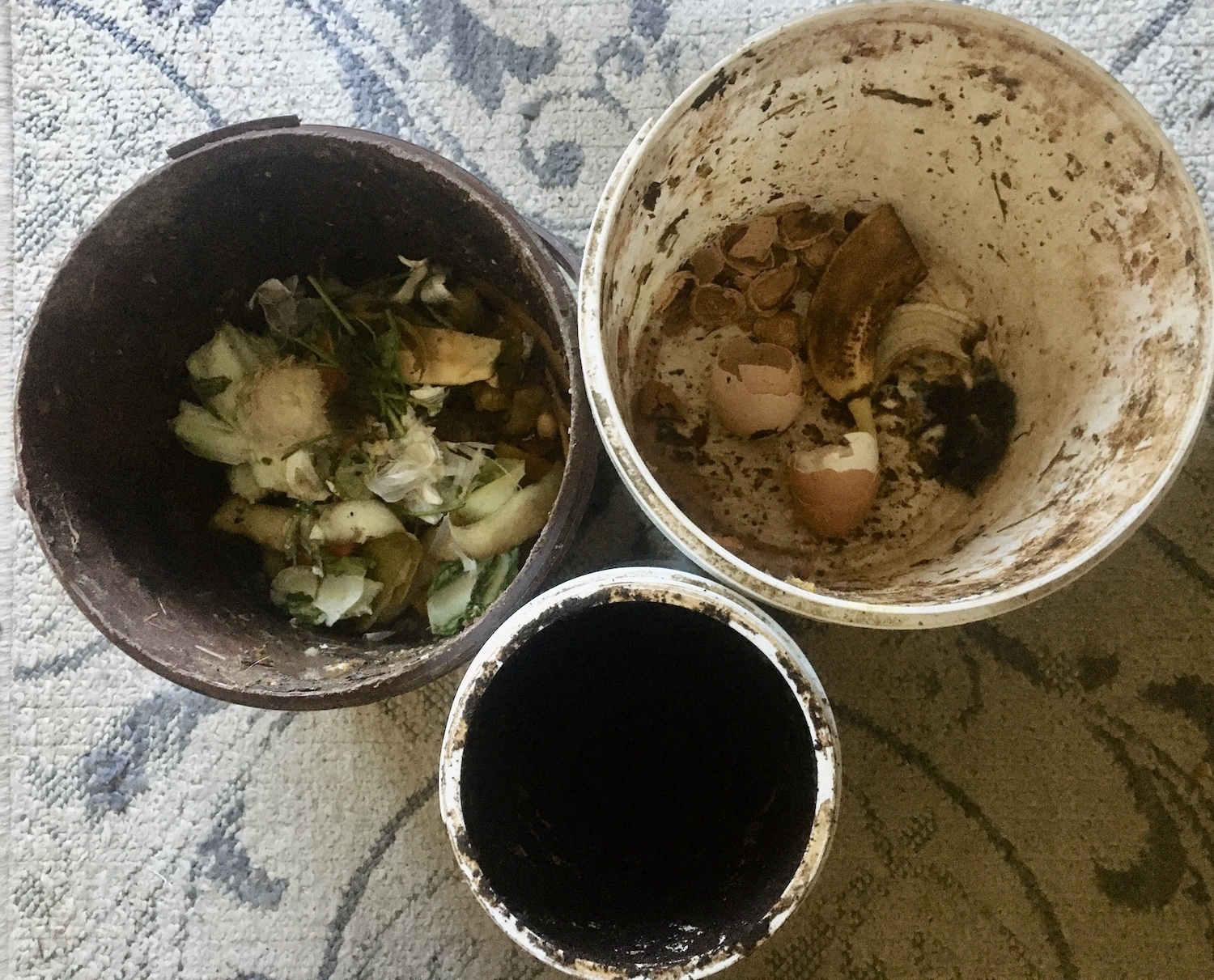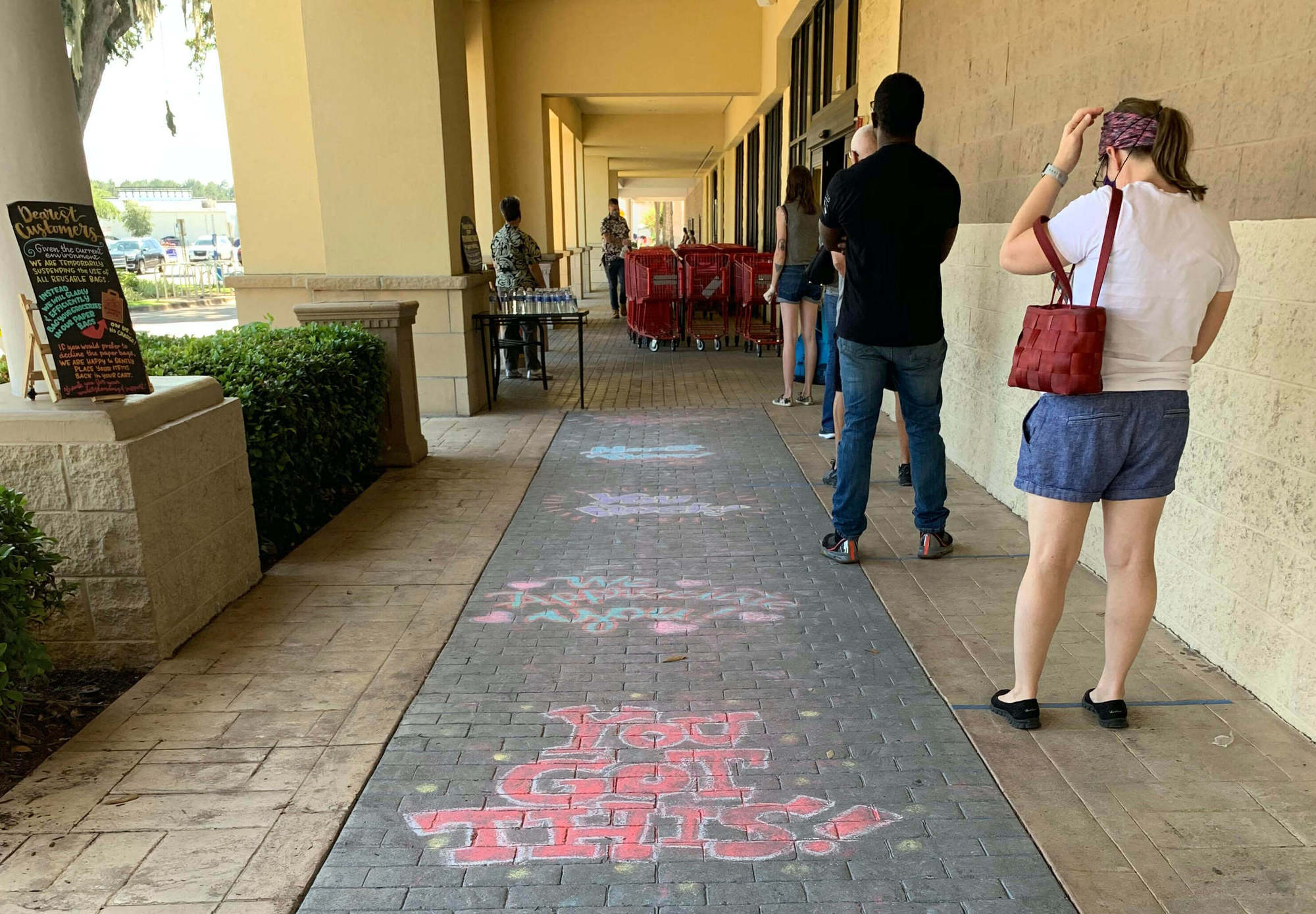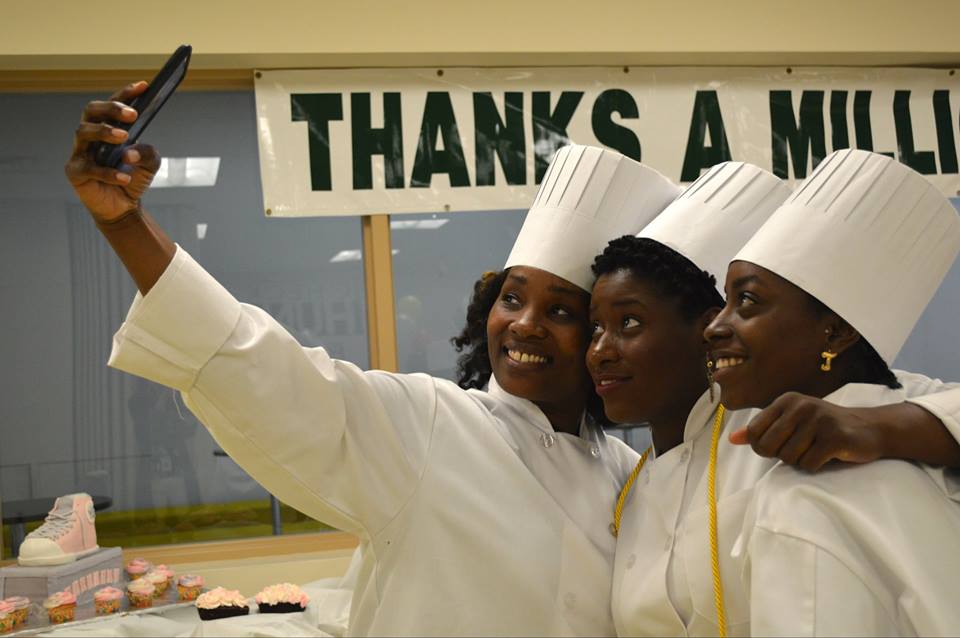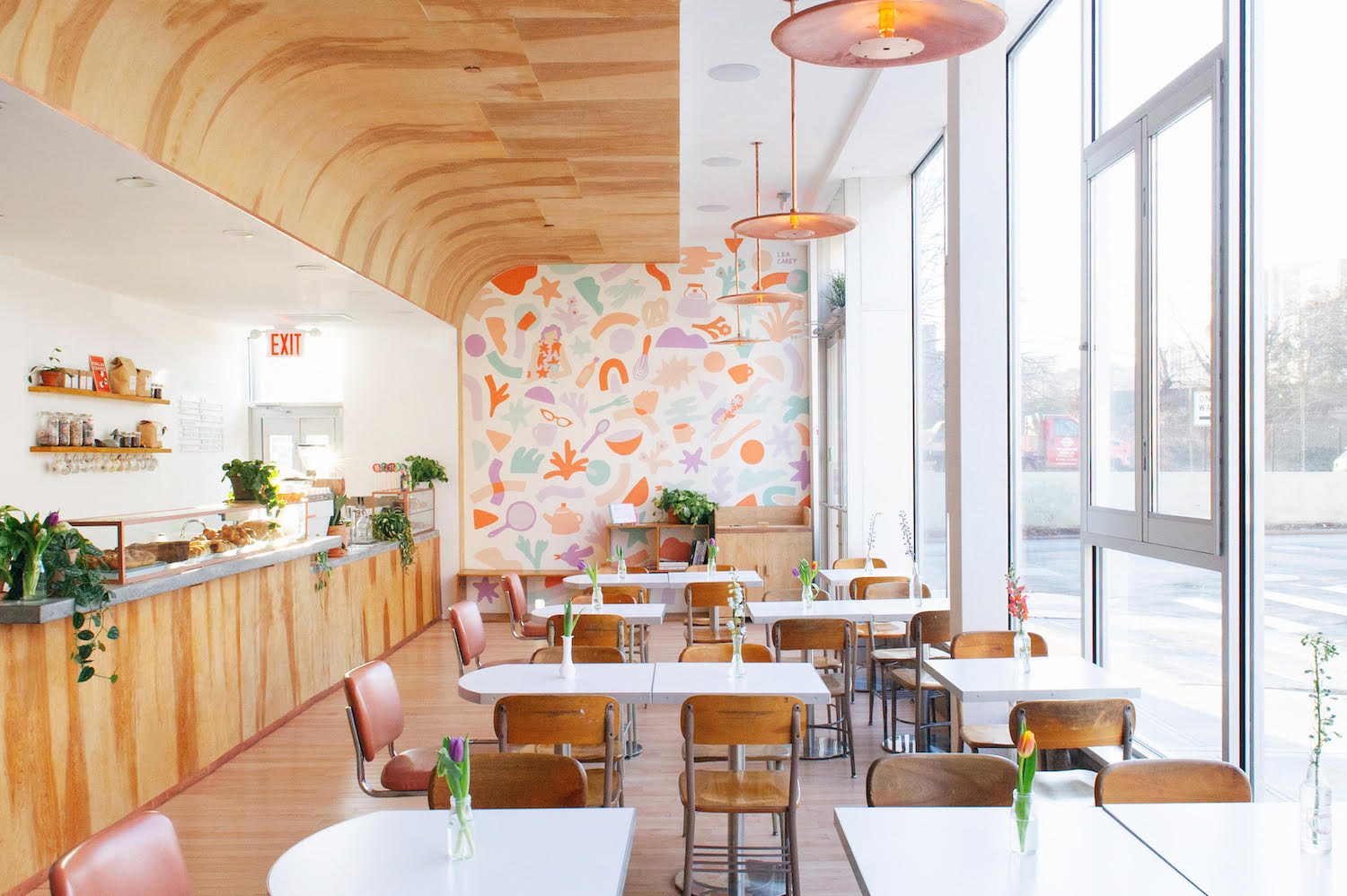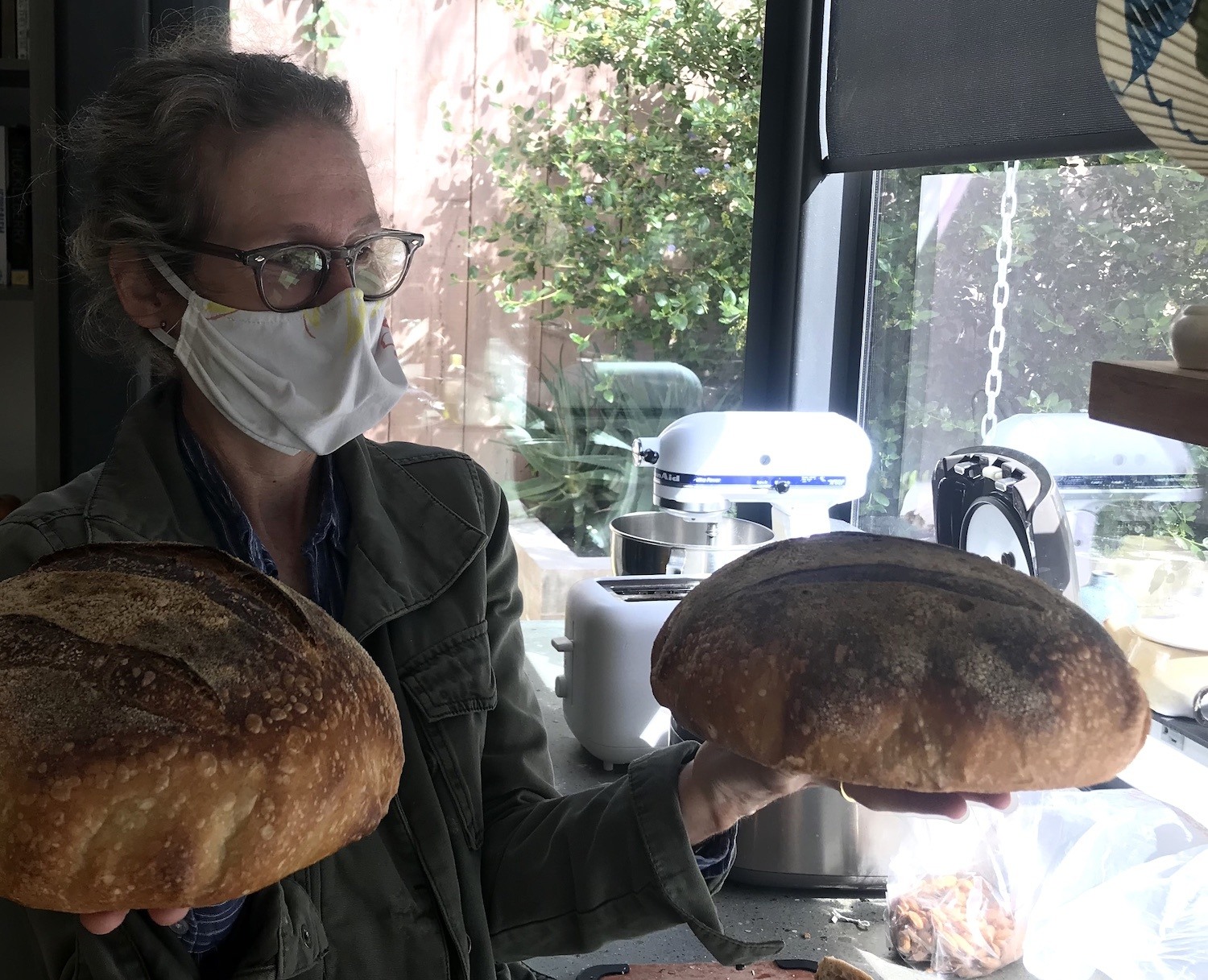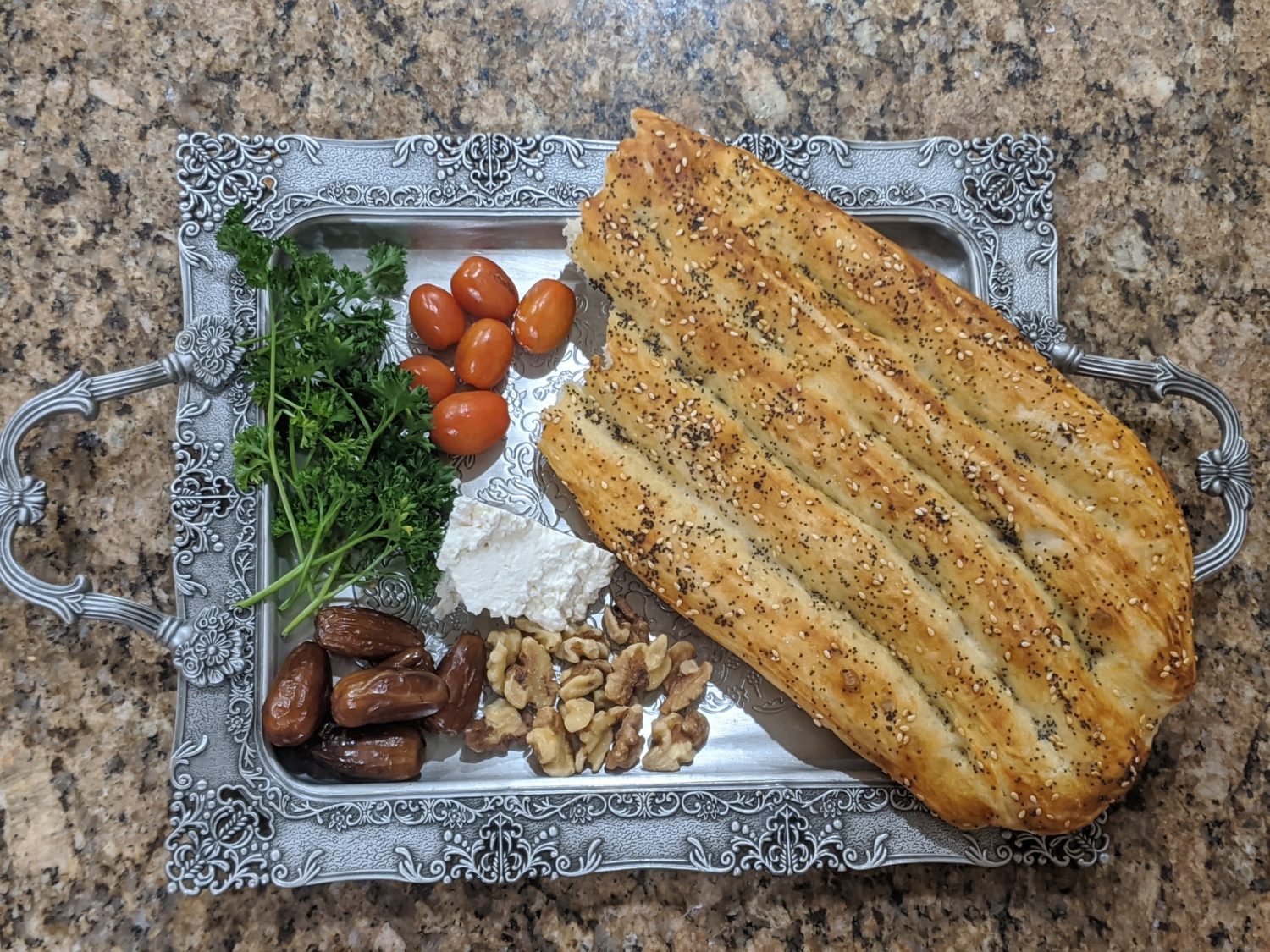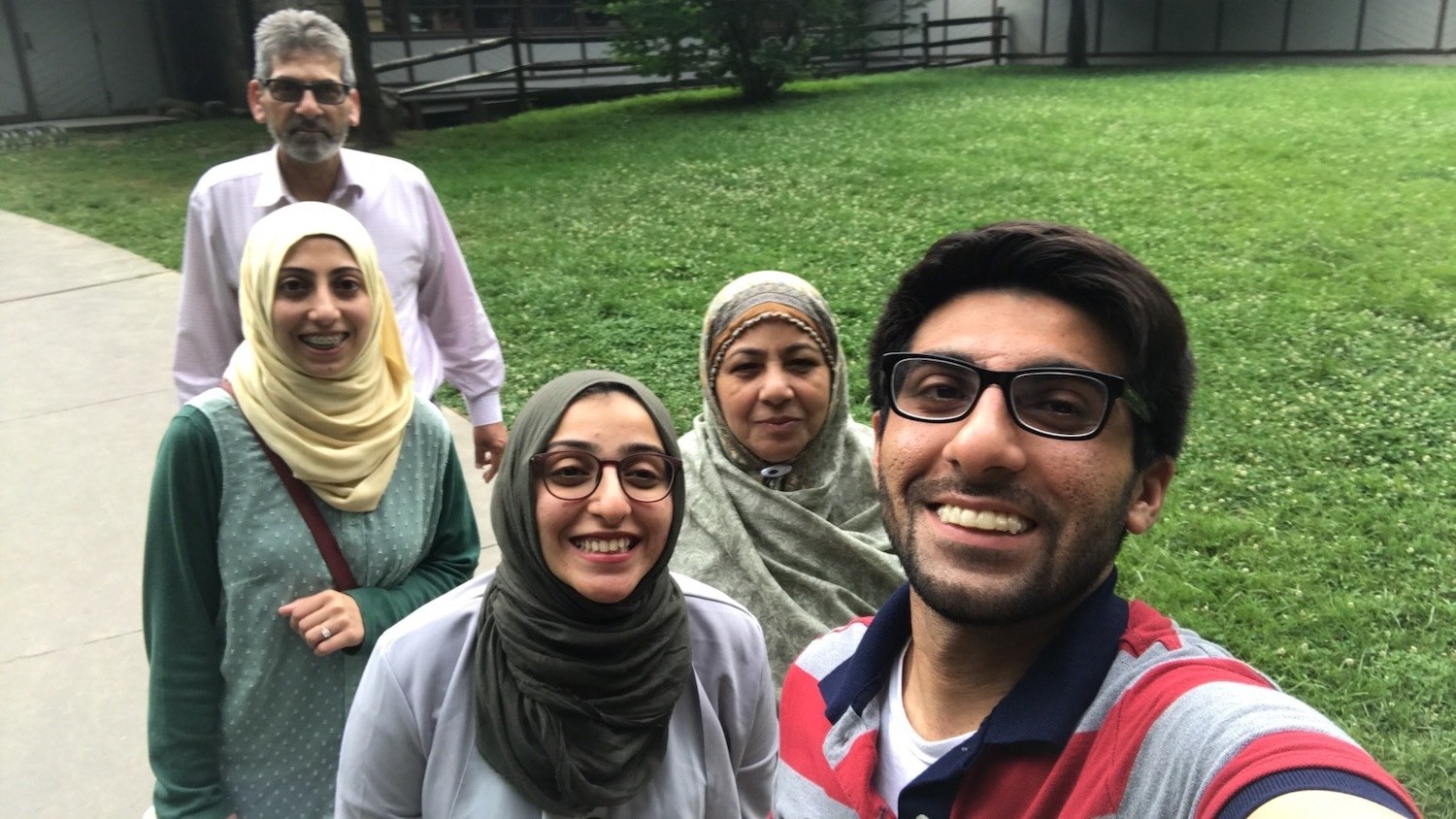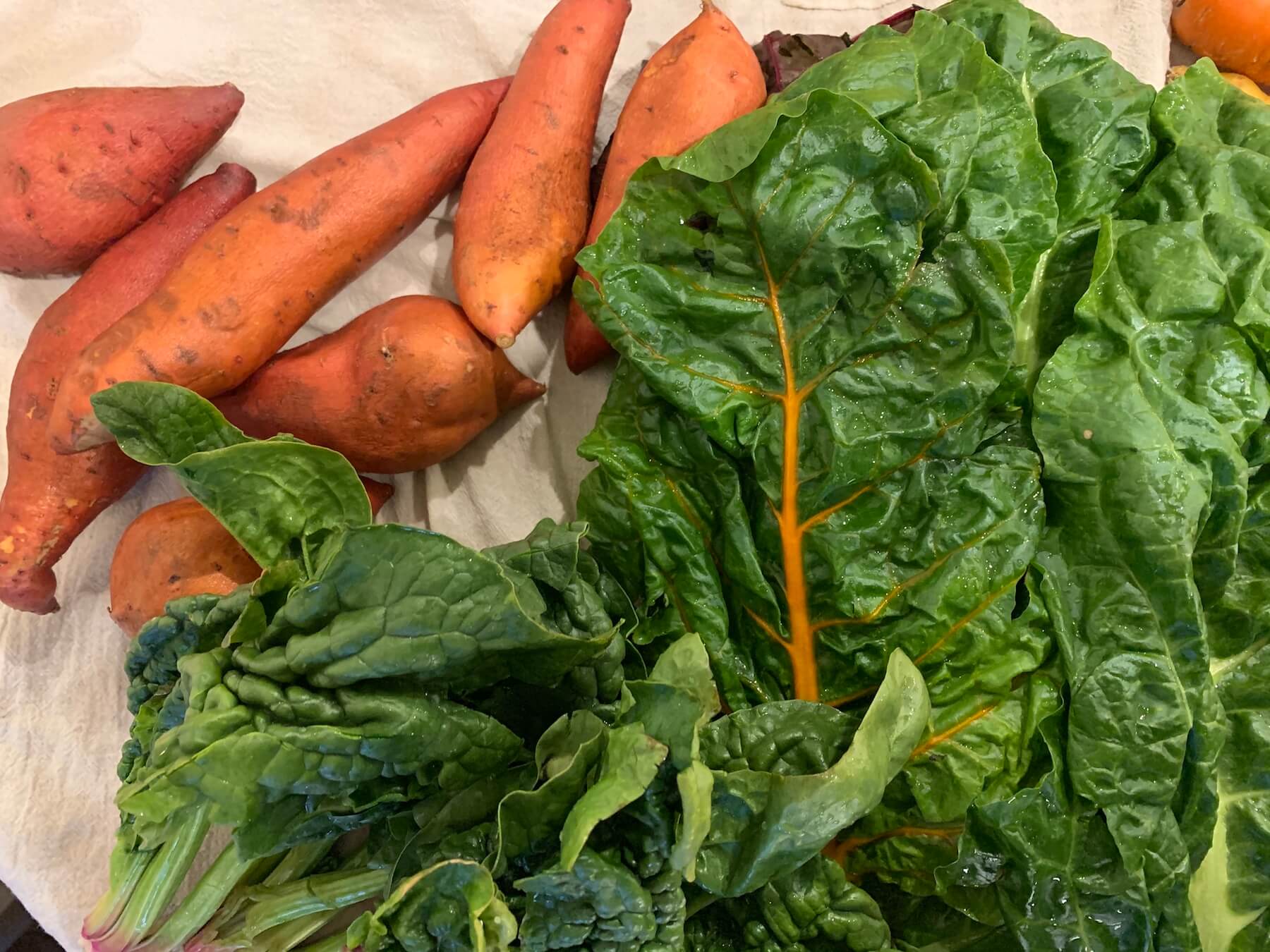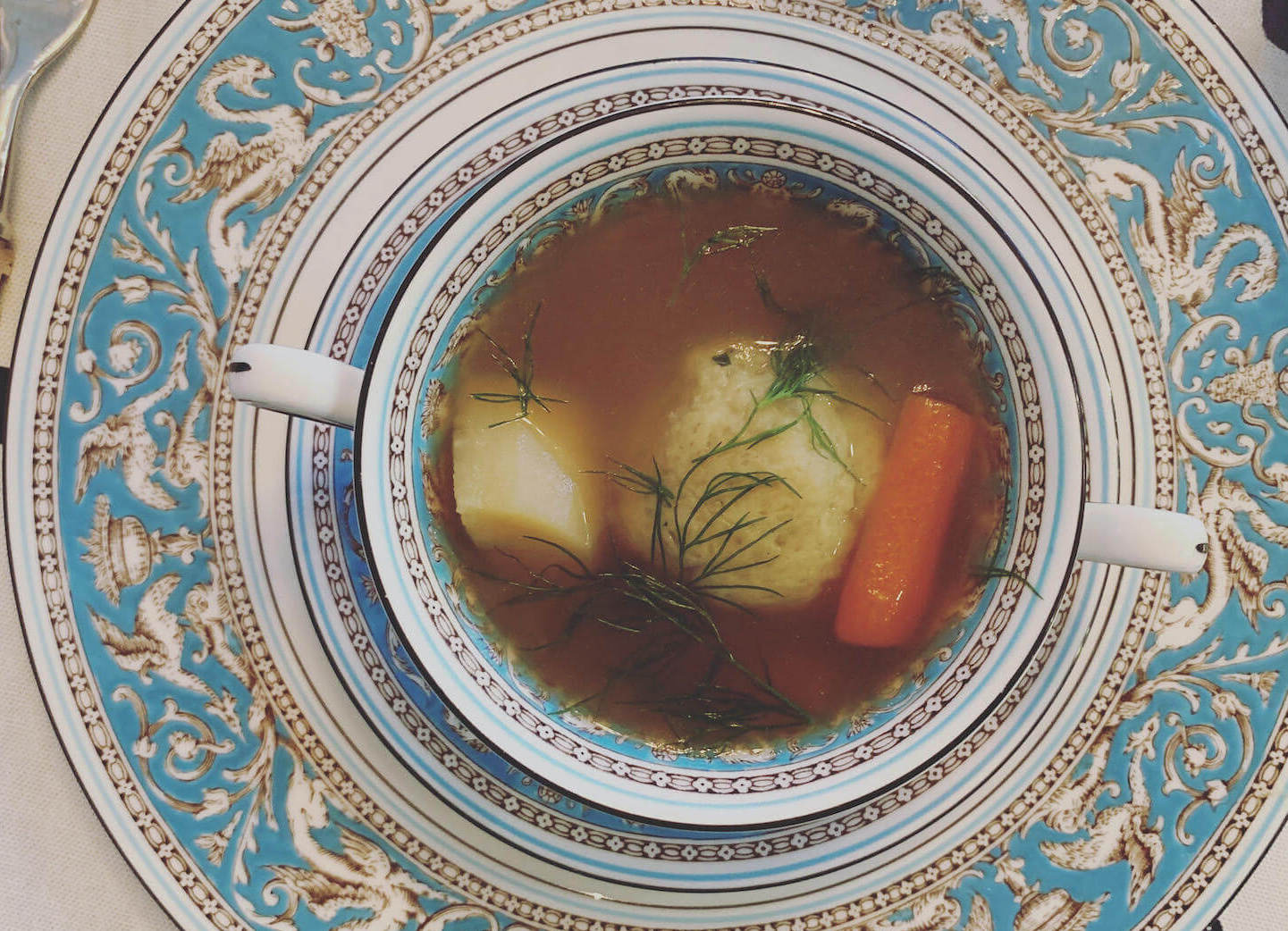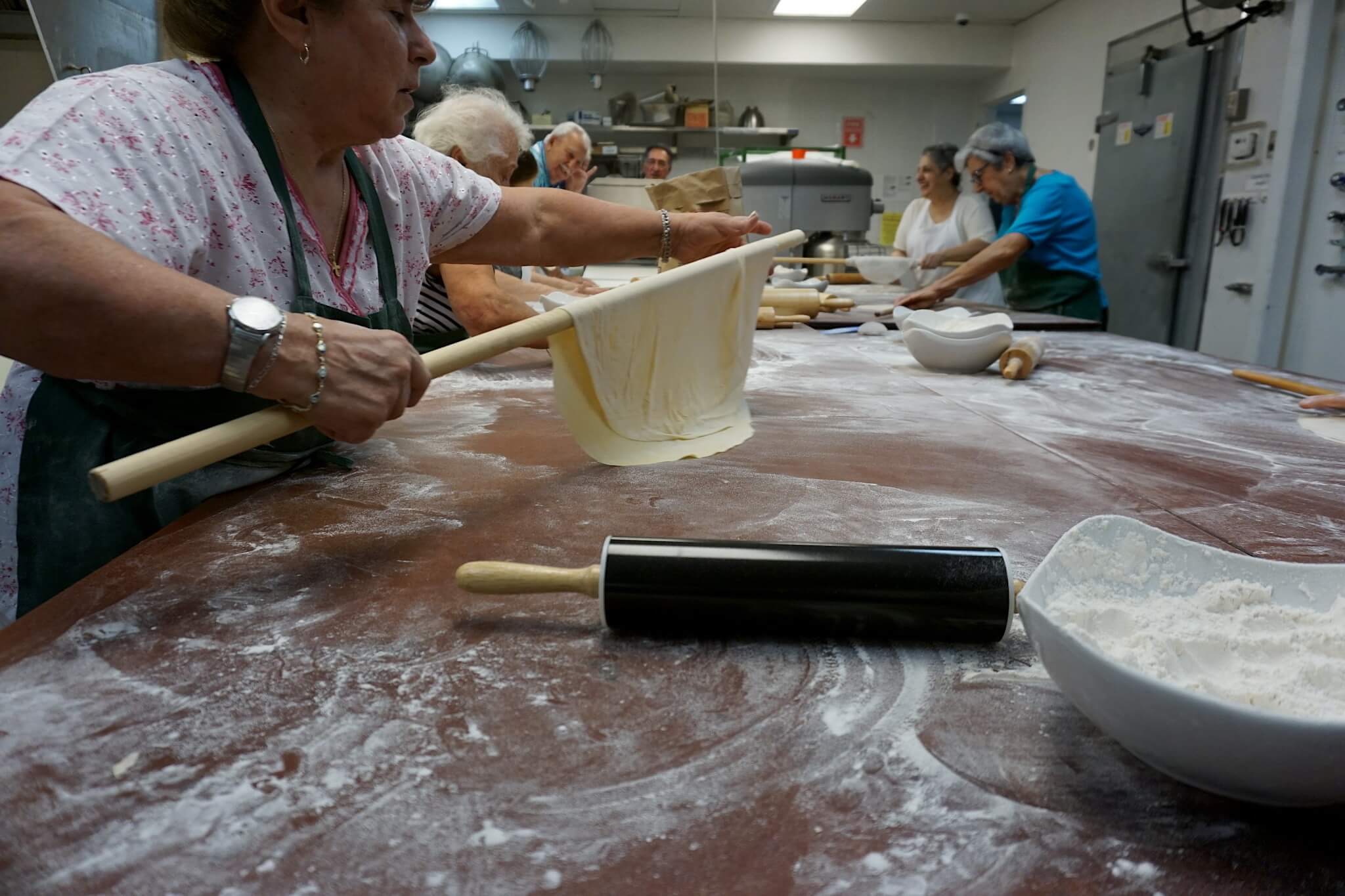
Liana Aghajanian
“Making this food alone, and then having to eat it alone, goes against cultural instinct.”
The day I decided to devote myself completely to the filo, to accept its fragility, and submit myself to working for it—and not necessarily with it—I could hear their voices. I covered the delicate dough with a damp cloth, and listened to them talk. I melted and clarified the butter, and cooked the spinach filling. I methodically folded each sheet into a little triangle, the same way you would fold a flag, and overheard a bit of gossip. I brushed the triangles with more butter, sprinkled black sesame seeds on top, and caught echoes of their laughter in the room just as my filo turned to a golden brown crisp.
Pictured above, community members of St. John Armenian Church in Southfield, Michigan, cooking together in pre-pandemic times.
I needed to hear voices, or at least tell myself that I could, because making this food alone, and then having to eat it alone, goes against cultural instinct. So during my shift at the imagined filo factory I created in my kitchen, I remembered the sounds that would normally accompany this type of cooking in a pre-pandemic world.
The modern Armenian story is filled with loss, but also renewal. It’s a story that thrives not on unity, but togetherness. Food has always functioned as the glue in that complex journey, a way to revel in good news, mourn loss and, above all, strengthen the bonds of fellowship when those very bonds were threatened by genocide, war, and continuous cycles of forced displacement. The food is important, but it’s the camaraderie that ensures these culinary traditions actually endure.
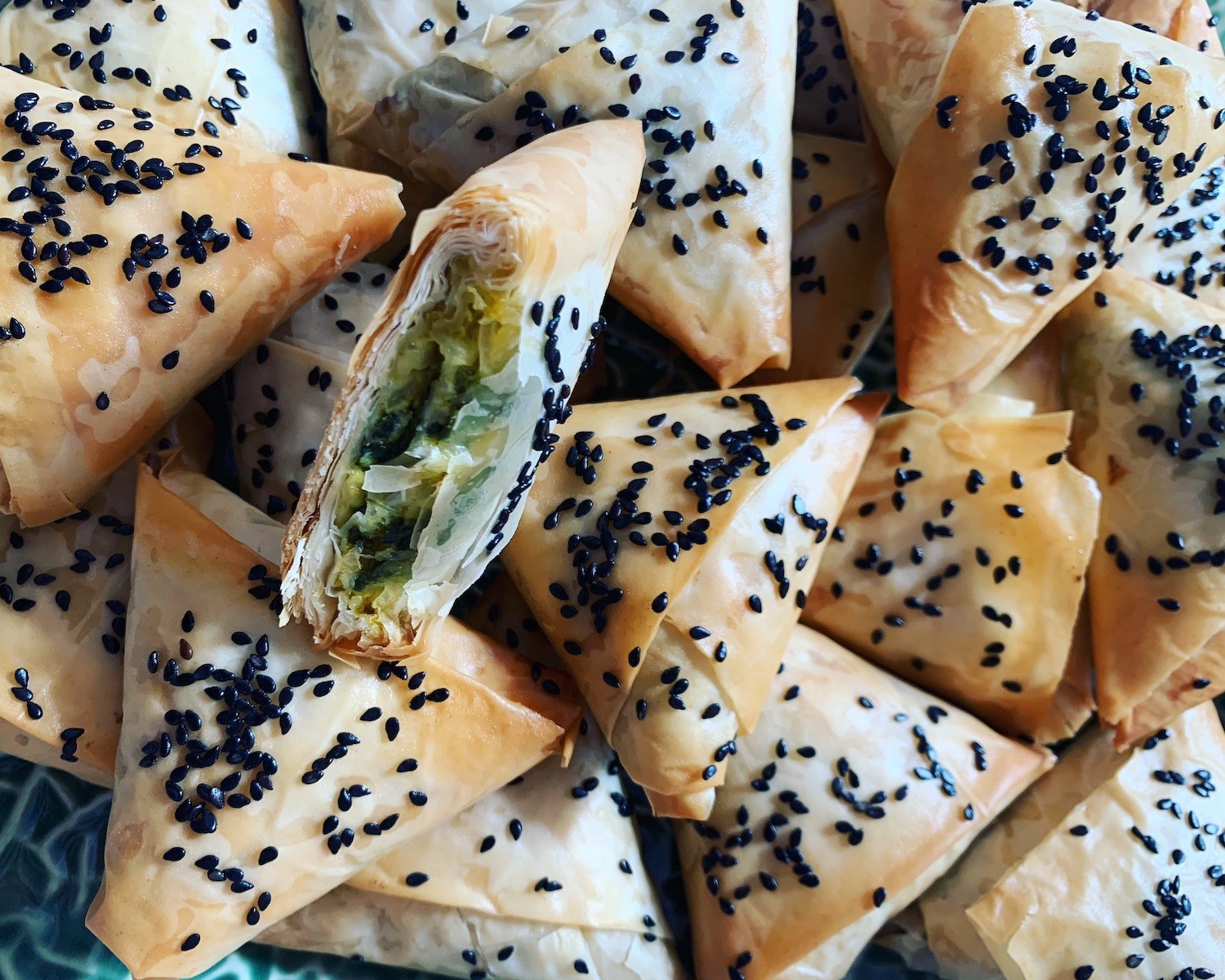
The author’s home has become a virtual “filo factory”.
Liana Aghajanian
During my childhood, that meant a house buzzing with relatives. The living room to the backyard would contain an intricate assembly line of marinated meat handlers, ready to hand off skewers to uncles manning the hand-made grill that they’d fan with a piece of cardboard—sometimes even a hair dryer. More recently, it meant cooking with an Armenian Women’s Guild, an integral part of many Armenian communities in the diaspora, as they prepare for their annual food bazaar. The gathering is in October, and for the guild members at the St. John Armenian Church in Southfield, Michigan, the cooking begins around March. They roll dough, catch up on news, dip their brushes in butter, drink coffee, shape meat into perfectly symmetrical spheres, and I watch in awe, hoping that my proximity means some of their skills will eventually rub off on me.
But this togetherness has a practical purpose too. Organized labor is at the heart of the dishes—repetitive tasks of layering, brushing and scooping, cutting mountains of herbs, pinching tiny pieces of meat, braiding bread, and stirring large pots of pilaf—it takes multiple people to achieve good results. It is not an especially difficult cuisine, but it is all-consuming, the kind of work that makes your back ache and your eyes go blurry. In a world where life continues to demand so much of our time, it’s also a dying art, an enormous time suck disappearing a little bit more with every generation.
I’m accepting the loneliness in my kitchen. It gives me time to think, but the deafening silence makes me think too much. Now, I have a shelf full of spices, filo in the freezer, a 5-lb. bag of sesame seeds, and dozens of Armenian cookbooks with bookmarks scattered across the living room floor, where the recipes often yield food for dozens of people at minimum.
Food has always functioned as the glue in that complex journey, a way to revel in good news, mourn loss and, above all, strengthen the bonds of fellowship when those very bonds were threatened by genocide, war, and continuous cycles of forced displacement.
I am submerged in stillness in a year that was meant to be all about personal movement, about family, about community. Instead, I move back and forth between my four walls more than I ever have, making more food than I know what to do with. I roll one grape leaf after another, I pinch the meat, I braid the bread, I stir the boiling hot milk every week to make madzoon (yogurt), repeating each step over and over again, filling entire days with my attempts. I sometimes fail, and try to forget that I have no guides nor guests to see me through the process. This is practice.
I cook to quiet the silence, to learn an ancestral culinary labor that thrives best on togetherness, so that my hands know how to handle the fragile pieces of filo by heart when it’s time to move, to join the assembly line and hear those familiar voices again.

